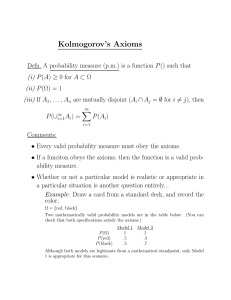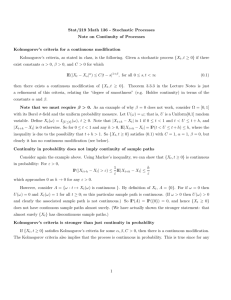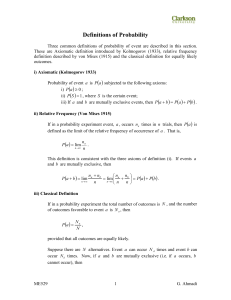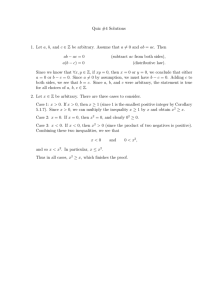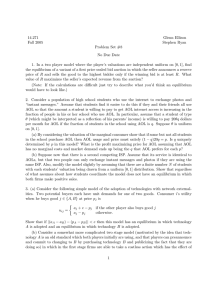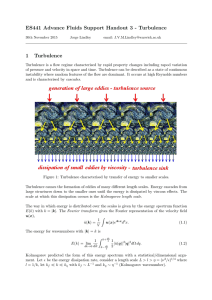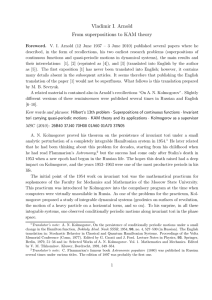Useful Consequences of Kolmogorov’s Axioms:
advertisement
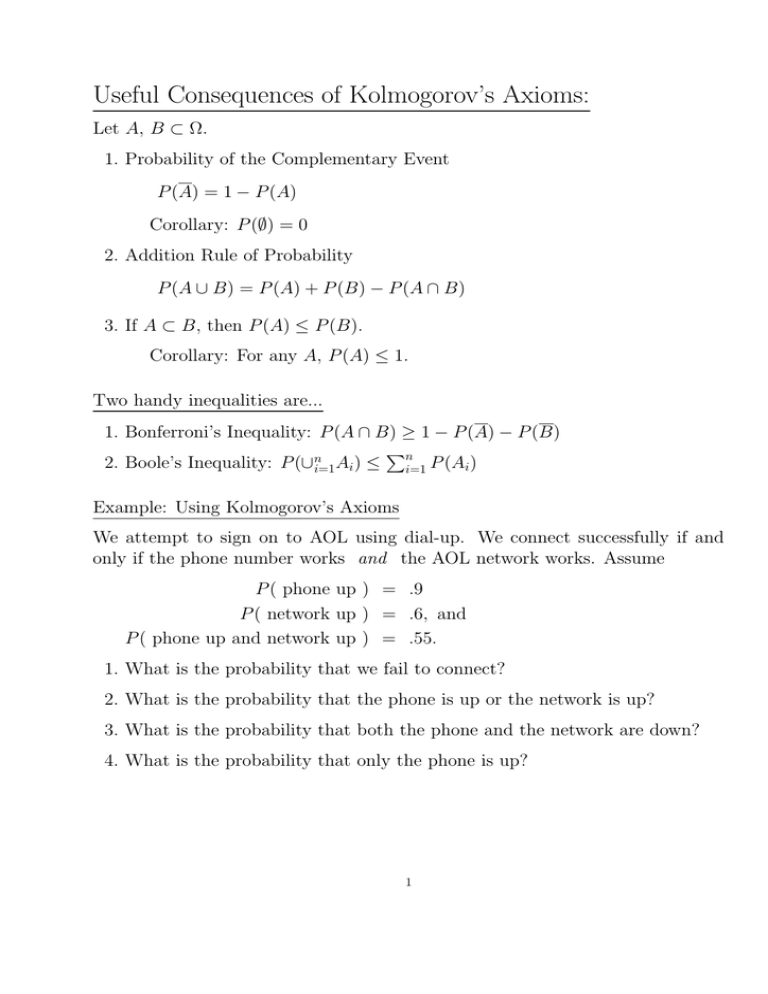
Useful Consequences of Kolmogorov’s Axioms: Let A, B ⊂ Ω. 1. Probability of the Complementary Event P (A) = 1 − P (A) Corollary: P (∅) = 0 2. Addition Rule of Probability P (A ∪ B) = P (A) + P (B) − P (A ∩ B) 3. If A ⊂ B, then P (A) ≤ P (B). Corollary: For any A, P (A) ≤ 1. Two handy inequalities are... 1. Bonferroni’s Inequality: P (A ∩ B) ≥ 1 − P (A) − P (B) P 2. Boole’s Inequality: P (∪ni=1 Ai ) ≤ ni=1 P (Ai ) Example: Using Kolmogorov’s Axioms We attempt to sign on to AOL using dial-up. We connect successfully if and only if the phone number works and the AOL network works. Assume P ( phone up ) = .9 P ( network up ) = .6, and P ( phone up and network up ) = .55. 1. What is the probability that we fail to connect? 2. What is the probability that the phone is up or the network is up? 3. What is the probability that both the phone and the network are down? 4. What is the probability that only the phone is up? 1
